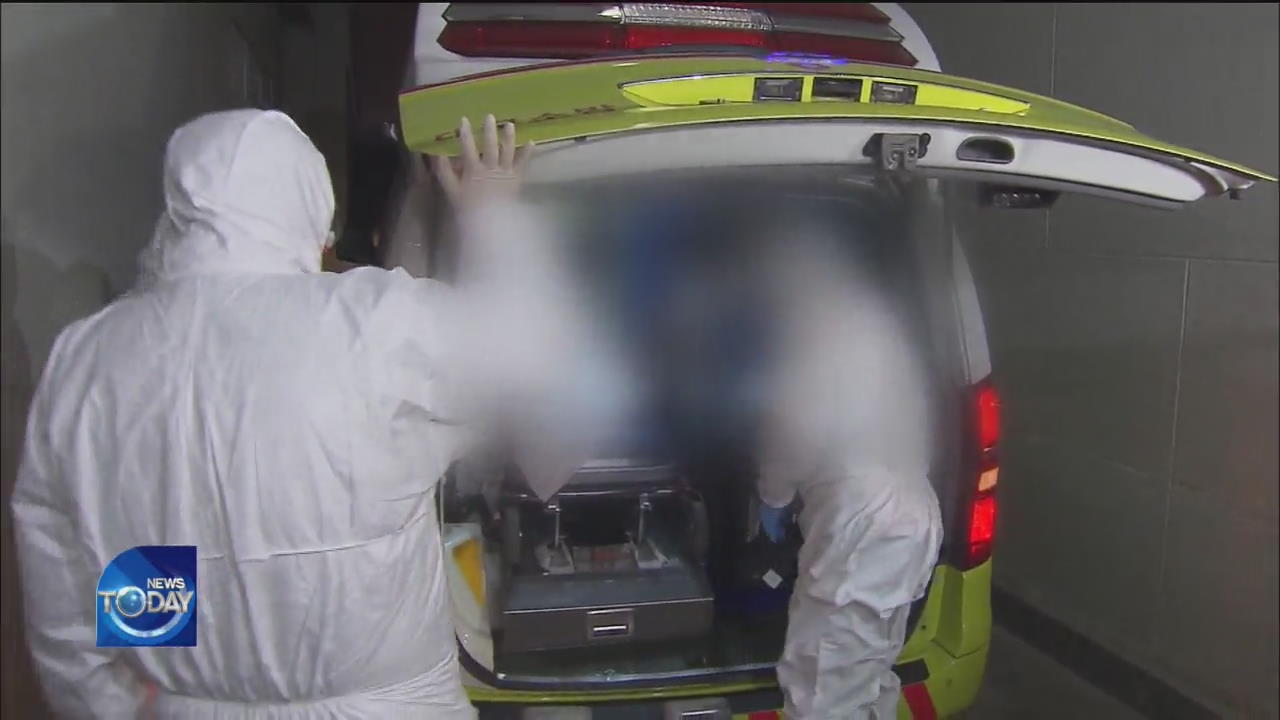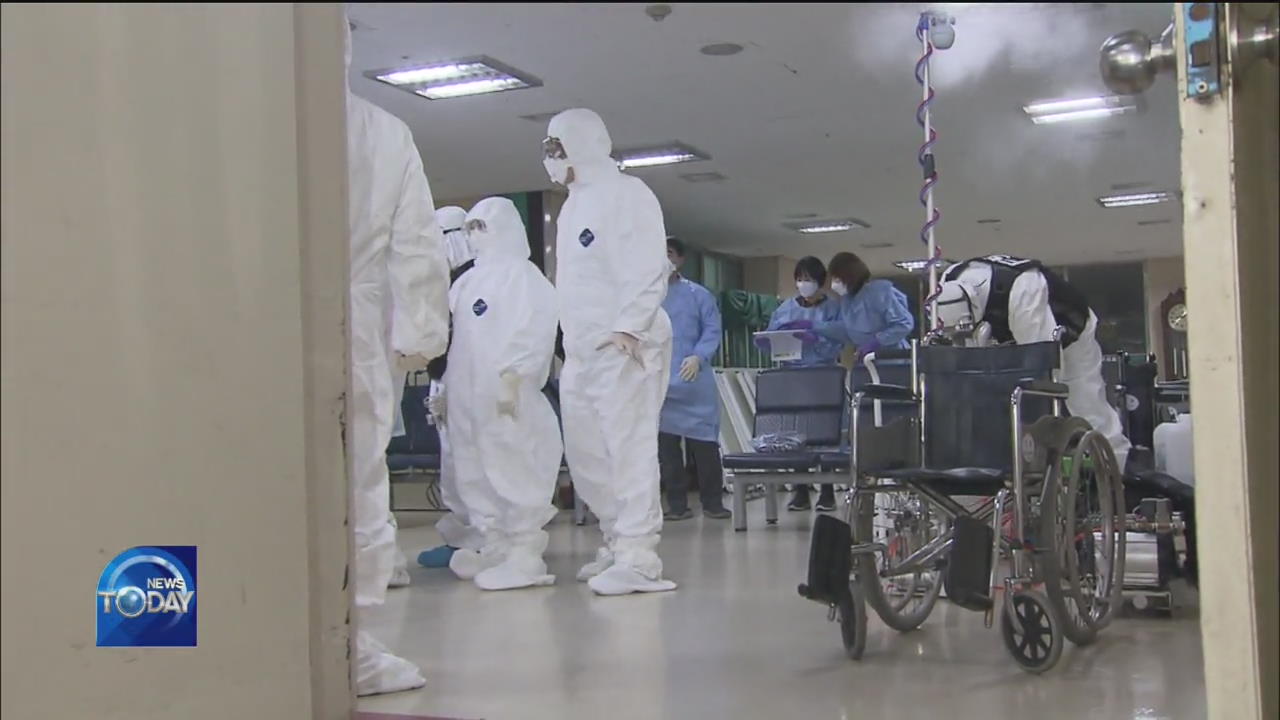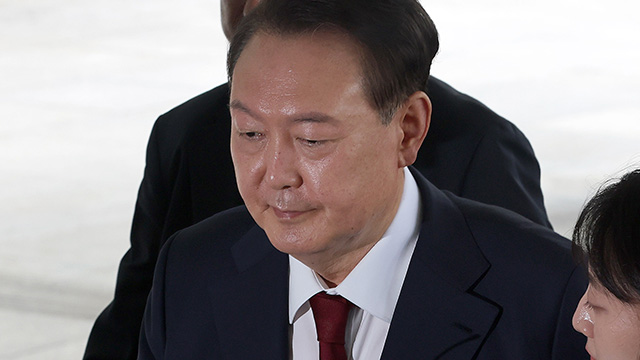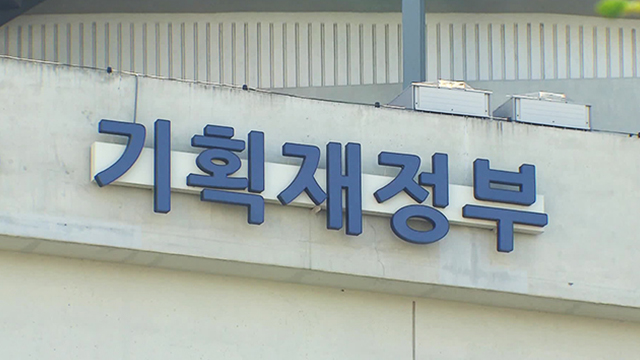VIRUS TREATMENT SYSTEMS TO BE OVERHAULED
입력 2020.03.02 (15:38)
수정 2020.03.02 (16:47)
읽어주기 기능은 크롬기반의
브라우저에서만 사용하실 수 있습니다.
[Anchor Lead]
A record 87 percent of COVID-19 cases in Korea are from Daegu and surrounding Gyeongsangbuk-do Province as of yesterday, causing a serious shortage of hospital beds and medical professionals in those areas. Authorities have therefore decided to overhaul the entire triage and treatment systems.
[Pkg]
There have been cases where patients in Daegu have died at home as they couldn't be admitted into hospital for COVID-19. They needed to be hospitalized as they were elderly and had preexisting conditions. But there weren't enough hospital beds for them, so they couldn't get proper treatment. To prevent any more unnecessary deaths, the government has decided to overhaul the COVID-19 treatment system. Until now, all confirmed cases were hospitalized, but now patients will be admitted depending on their symptoms. Most of the confirmed cases show only mild symptoms, so from now on treatment will be focused on serious cases.
[Soundbite] PARK NEUNG-HOO(CENTRAL DISASTER AND SAFETY COUNTERMEASURES HQ) : "One of the characteristics of COVID-19 is that many of the infected patients do not require hospitalization."
Patients will be classified into four levels of symptom severity. Those above the moderately serious level will be treated in negative pressure chambers or infectious disease exclusive hospitals. Those with only mild symptoms will be treated in treatment centers at state-run facilities.
[Soundbite] JUNG EUN-KYEONG(DIRECTOR, KOREA CENTERS FOR DISEASE CONTROL AND PREVENTION) : "Those who need hospitalization will be treated in hospitals and those with mild symptoms will be monitored and cared for at treatment centers to prevent the spread."
When the conditions of hospitalized patients improve, they will be moved to treatment centers at doctors' approval and their progress will be monitored there. They will be released from isolation only after they've tested negative twice over a period of 24 hours and deemed not to be contagious.
[Soundbite] JUNG EUN-KYEONG(DIRECTOR, KOREA CENTERS FOR DISEASE CONTROL AND PREVENTION) : "They will be quarantined and monitored at the treatment center until they're determined to be completely harmless."
University hospitals and general hospitals nationwide will cooperate fully to secure enough beds for seriously ill patients.
A record 87 percent of COVID-19 cases in Korea are from Daegu and surrounding Gyeongsangbuk-do Province as of yesterday, causing a serious shortage of hospital beds and medical professionals in those areas. Authorities have therefore decided to overhaul the entire triage and treatment systems.
[Pkg]
There have been cases where patients in Daegu have died at home as they couldn't be admitted into hospital for COVID-19. They needed to be hospitalized as they were elderly and had preexisting conditions. But there weren't enough hospital beds for them, so they couldn't get proper treatment. To prevent any more unnecessary deaths, the government has decided to overhaul the COVID-19 treatment system. Until now, all confirmed cases were hospitalized, but now patients will be admitted depending on their symptoms. Most of the confirmed cases show only mild symptoms, so from now on treatment will be focused on serious cases.
[Soundbite] PARK NEUNG-HOO(CENTRAL DISASTER AND SAFETY COUNTERMEASURES HQ) : "One of the characteristics of COVID-19 is that many of the infected patients do not require hospitalization."
Patients will be classified into four levels of symptom severity. Those above the moderately serious level will be treated in negative pressure chambers or infectious disease exclusive hospitals. Those with only mild symptoms will be treated in treatment centers at state-run facilities.
[Soundbite] JUNG EUN-KYEONG(DIRECTOR, KOREA CENTERS FOR DISEASE CONTROL AND PREVENTION) : "Those who need hospitalization will be treated in hospitals and those with mild symptoms will be monitored and cared for at treatment centers to prevent the spread."
When the conditions of hospitalized patients improve, they will be moved to treatment centers at doctors' approval and their progress will be monitored there. They will be released from isolation only after they've tested negative twice over a period of 24 hours and deemed not to be contagious.
[Soundbite] JUNG EUN-KYEONG(DIRECTOR, KOREA CENTERS FOR DISEASE CONTROL AND PREVENTION) : "They will be quarantined and monitored at the treatment center until they're determined to be completely harmless."
University hospitals and general hospitals nationwide will cooperate fully to secure enough beds for seriously ill patients.
■ 제보하기
▷ 카카오톡 : 'KBS제보' 검색, 채널 추가
▷ 전화 : 02-781-1234, 4444
▷ 이메일 : kbs1234@kbs.co.kr
▷ 유튜브, 네이버, 카카오에서도 KBS뉴스를 구독해주세요!
- VIRUS TREATMENT SYSTEMS TO BE OVERHAULED
-
- 입력 2020-03-02 15:55:43
- 수정2020-03-02 16:47:07

[Anchor Lead]
A record 87 percent of COVID-19 cases in Korea are from Daegu and surrounding Gyeongsangbuk-do Province as of yesterday, causing a serious shortage of hospital beds and medical professionals in those areas. Authorities have therefore decided to overhaul the entire triage and treatment systems.
[Pkg]
There have been cases where patients in Daegu have died at home as they couldn't be admitted into hospital for COVID-19. They needed to be hospitalized as they were elderly and had preexisting conditions. But there weren't enough hospital beds for them, so they couldn't get proper treatment. To prevent any more unnecessary deaths, the government has decided to overhaul the COVID-19 treatment system. Until now, all confirmed cases were hospitalized, but now patients will be admitted depending on their symptoms. Most of the confirmed cases show only mild symptoms, so from now on treatment will be focused on serious cases.
[Soundbite] PARK NEUNG-HOO(CENTRAL DISASTER AND SAFETY COUNTERMEASURES HQ) : "One of the characteristics of COVID-19 is that many of the infected patients do not require hospitalization."
Patients will be classified into four levels of symptom severity. Those above the moderately serious level will be treated in negative pressure chambers or infectious disease exclusive hospitals. Those with only mild symptoms will be treated in treatment centers at state-run facilities.
[Soundbite] JUNG EUN-KYEONG(DIRECTOR, KOREA CENTERS FOR DISEASE CONTROL AND PREVENTION) : "Those who need hospitalization will be treated in hospitals and those with mild symptoms will be monitored and cared for at treatment centers to prevent the spread."
When the conditions of hospitalized patients improve, they will be moved to treatment centers at doctors' approval and their progress will be monitored there. They will be released from isolation only after they've tested negative twice over a period of 24 hours and deemed not to be contagious.
[Soundbite] JUNG EUN-KYEONG(DIRECTOR, KOREA CENTERS FOR DISEASE CONTROL AND PREVENTION) : "They will be quarantined and monitored at the treatment center until they're determined to be completely harmless."
University hospitals and general hospitals nationwide will cooperate fully to secure enough beds for seriously ill patients.
A record 87 percent of COVID-19 cases in Korea are from Daegu and surrounding Gyeongsangbuk-do Province as of yesterday, causing a serious shortage of hospital beds and medical professionals in those areas. Authorities have therefore decided to overhaul the entire triage and treatment systems.
[Pkg]
There have been cases where patients in Daegu have died at home as they couldn't be admitted into hospital for COVID-19. They needed to be hospitalized as they were elderly and had preexisting conditions. But there weren't enough hospital beds for them, so they couldn't get proper treatment. To prevent any more unnecessary deaths, the government has decided to overhaul the COVID-19 treatment system. Until now, all confirmed cases were hospitalized, but now patients will be admitted depending on their symptoms. Most of the confirmed cases show only mild symptoms, so from now on treatment will be focused on serious cases.
[Soundbite] PARK NEUNG-HOO(CENTRAL DISASTER AND SAFETY COUNTERMEASURES HQ) : "One of the characteristics of COVID-19 is that many of the infected patients do not require hospitalization."
Patients will be classified into four levels of symptom severity. Those above the moderately serious level will be treated in negative pressure chambers or infectious disease exclusive hospitals. Those with only mild symptoms will be treated in treatment centers at state-run facilities.
[Soundbite] JUNG EUN-KYEONG(DIRECTOR, KOREA CENTERS FOR DISEASE CONTROL AND PREVENTION) : "Those who need hospitalization will be treated in hospitals and those with mild symptoms will be monitored and cared for at treatment centers to prevent the spread."
When the conditions of hospitalized patients improve, they will be moved to treatment centers at doctors' approval and their progress will be monitored there. They will be released from isolation only after they've tested negative twice over a period of 24 hours and deemed not to be contagious.
[Soundbite] JUNG EUN-KYEONG(DIRECTOR, KOREA CENTERS FOR DISEASE CONTROL AND PREVENTION) : "They will be quarantined and monitored at the treatment center until they're determined to be completely harmless."
University hospitals and general hospitals nationwide will cooperate fully to secure enough beds for seriously ill patients.
이 기사가 좋으셨다면
-
좋아요
0
-
응원해요
0
-
후속 원해요
0










![[HEADLINE]](https://news.kbs.co.kr/data/news/2020/03/02/4392092_10.jpg)


![[속보] 정성호 법무장관 후보자 “검찰 해체 표현 적절치 않아…국민 눈높이 맞는 개혁 이뤄야”](/data/layer/904/2025/07/20250701_86evyp.png)



이 기사에 대한 의견을 남겨주세요.